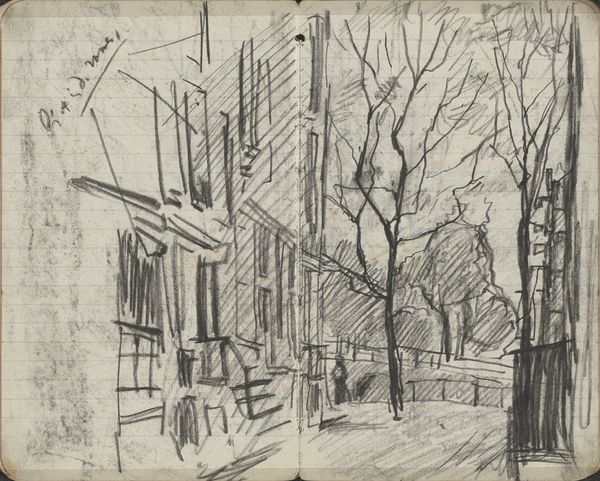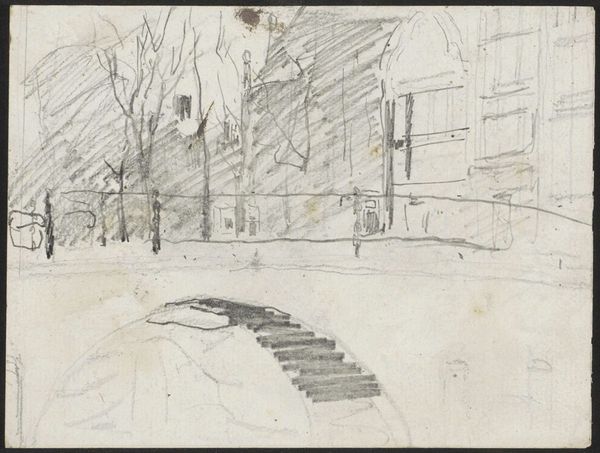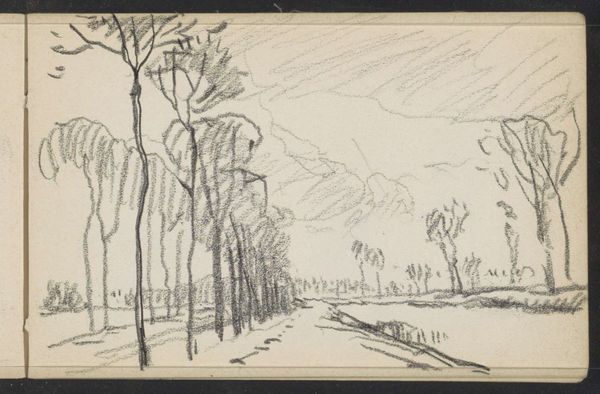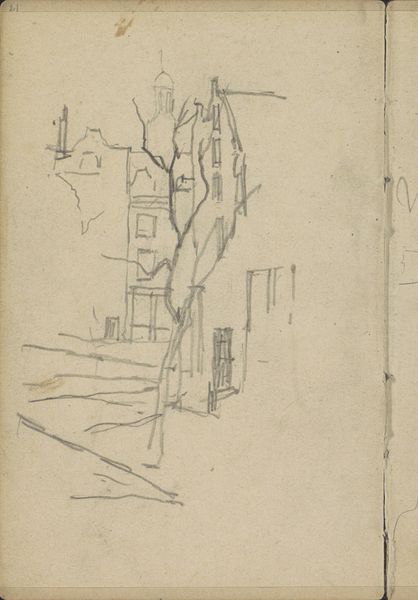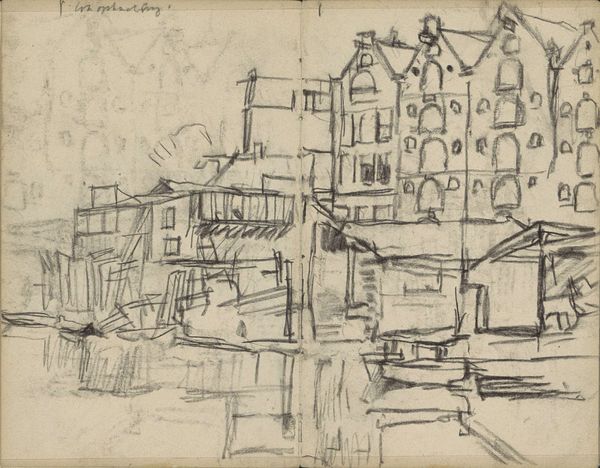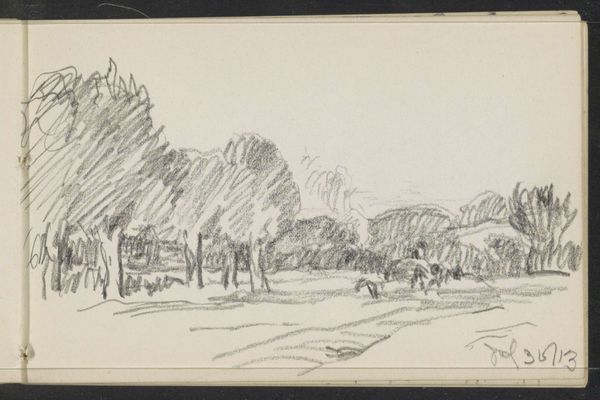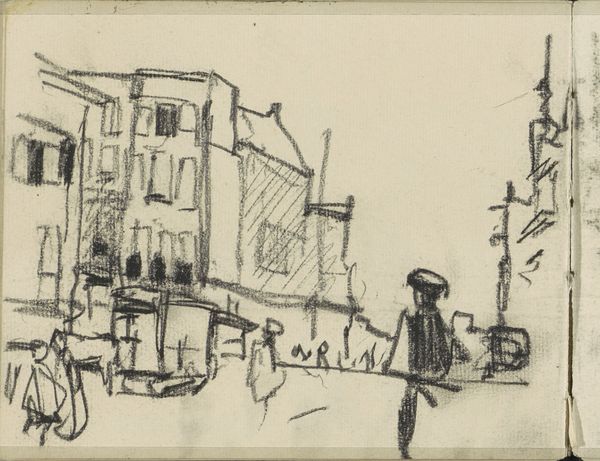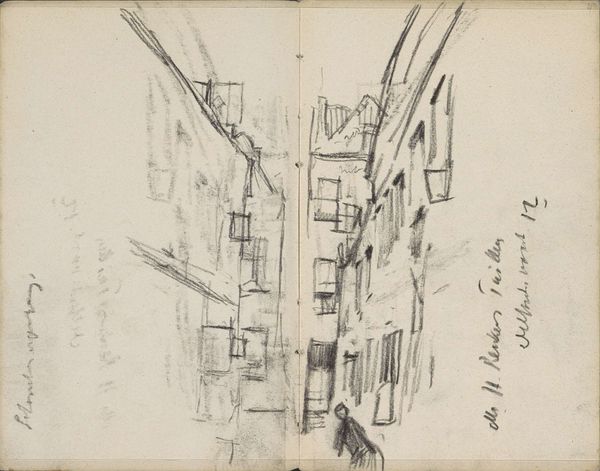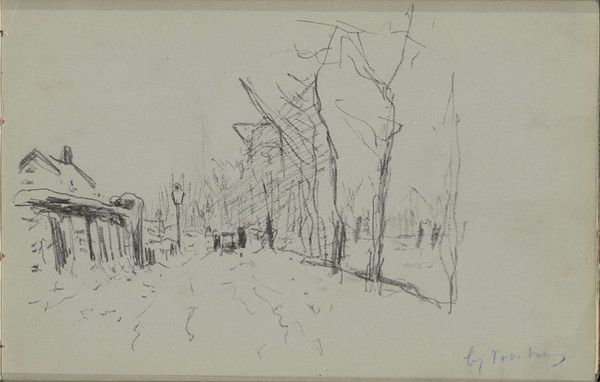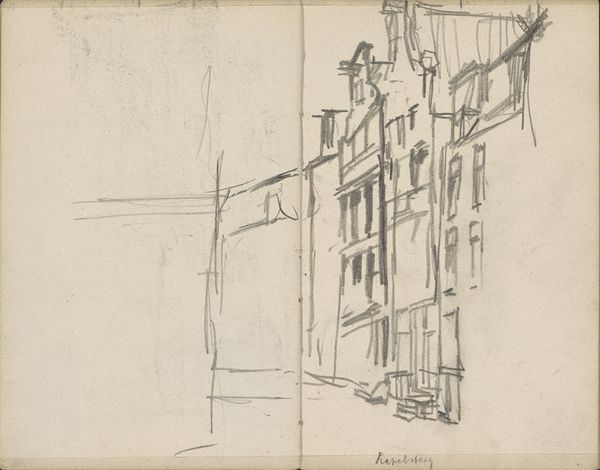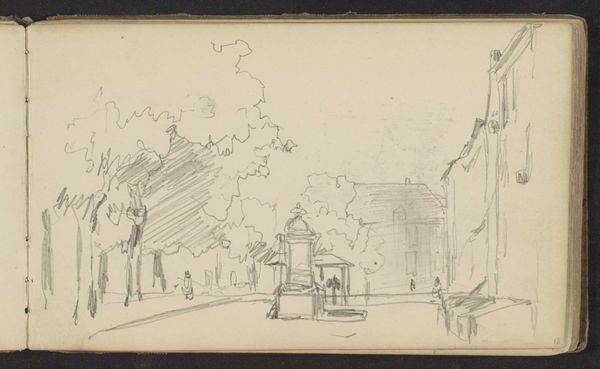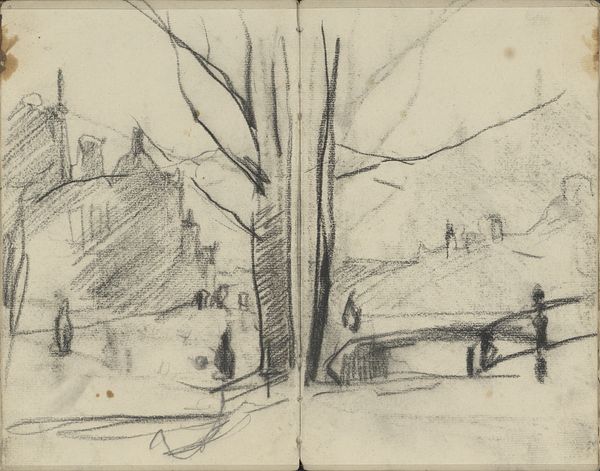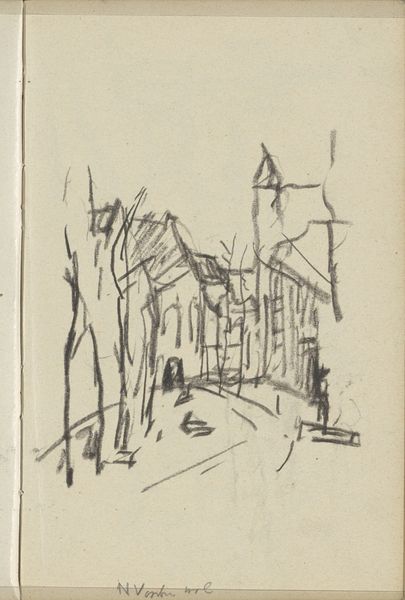
Copyright: Rijks Museum: Open Domain
Curator: Immediately, I am struck by the delicate and ephemeral quality of this sketch, almost like a fleeting memory captured on paper. Editor: Indeed. This drawing, believed to have been created by Ferdinand Oldewelt sometime between 1908 and 1923, is titled "De Boompjes met de Maasbruggen te Rotterdam" and offers us a glimpse into the city's past. It’s rendered with pencil and pen, likely in a sketchbook. Curator: The bridge looming in the background is quite iconic, yet softened by the impressionistic style. The sketchy lines representing the foliage evoke a sense of nostalgia for a time when the urban landscape was more intertwined with nature. Editor: You're right. The inclusion of both the bustling cityscape and the trees hints at a particular moment in Rotterdam’s history—a period of intense industrial and infrastructural development juxtaposed with older, more natural elements. These bridges weren't just physical structures; they were symbols of progress, connecting communities and facilitating trade. Curator: The trams and carriages seem almost ghostly in their depiction, evoking the passage of time and the constant flux of city life. Notice how Oldewelt has represented the wheels-- tiny repeated arcs suggest motion and the perpetual energy of urban modernity. Editor: And those bare trees! In the visual vocabulary, trees are often associated with family ancestry, roots, history, and growth. Placed directly between the viewer and the modern world of industrialization, there is a poignant tension here between nature and society. The location, near the water, suggests purification and change too, doesn’t it? Curator: Absolutely, and thinking about the social aspect, one can imagine Oldewelt situated on a bench, sketching away, a silent observer of Rotterdam’s transformation. Sketchbooks are incredibly important and can reveal the politics of how cities changed through industrial expansion. It offers a window into how citizens grappled with modernity and changing urban aesthetics. Editor: The immediacy of this work makes Oldewelt’s personal observations incredibly powerful. He makes the historical seem intimate. Curator: I agree. The seemingly simple medium and style speaks volumes. The bridges, sketched out here in pencil, became iconic reminders of Rotterdam after its bombardment in World War II. This piece allows for quiet contemplation and helps us reflect on what progress, art, and the passage of time can signify.
Comments
No comments
Be the first to comment and join the conversation on the ultimate creative platform.
